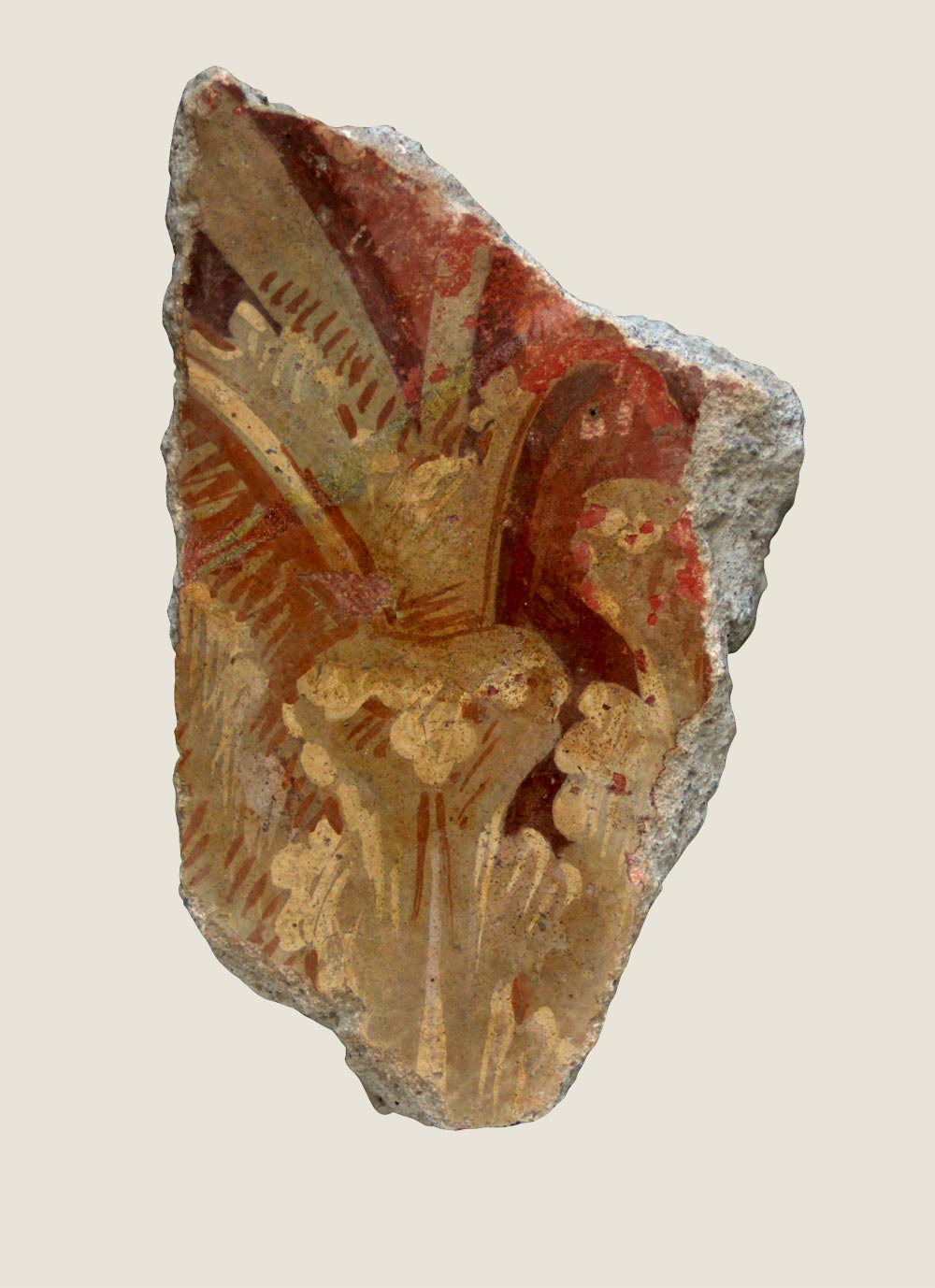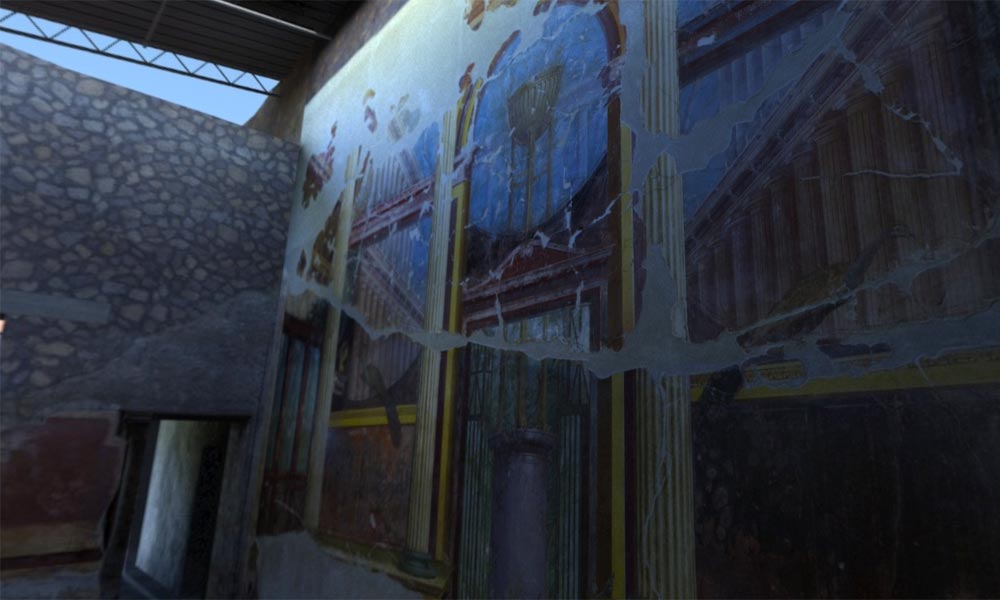Painting Fragment with Corinthian Capital

Fluted Column, Red Beam, Lower Part of Shuttered Painting

Grand Reception Room (Oecus) 15

For the 3D experience, you may need to check WebGL support for your browser.
You will see a panorama of this large reception room that preserves an ancient Second Style mural on its east wall. The corresponding west wall was not excavated because it lies beneath a modern road.
xGrand Oecus (Room 15)

Wall painting from room 15
This grand reception space, or oecus, (room 15) would have been ideal for entertaining large numbers of guests, for example, at special dinner parties. It is very close to the cubiculum (11) in the ancient villa and may have functioned in concert with it when guests required overnight accommodations.
Fragments of a Second Pompeian Style wall painting showing a colonnaded outdoor sanctuary have been recently identified as from this reception hall. This presentation of the fragments gives a sense of the visual richness of room 15 and the likely meaning of its décor. As in the atrium (5), the imagery celebrated military victory with rows of shields, but here dedicated and displayed in an open-air colonnaded sanctuary. At the center of the sacred garden precinct is an immense golden cauldron set on a tripod. Perhaps it represents the tripod of the oracle at Delphi in the sanctuary of the god Apollo.
Such illusionistic paintings of grand colonnaded structures made of expensive exotic marble would have conveyed messages of power rivaling that of gods and kings. In their villas far removed from Rome, owners could indulge in such allusions, which in late Republican Rome would have been condemned by conservative moralists of the old Roman aristocracy.
The fragments of this wall painting, first discovered by the Italian archaeologists at Oplontis, were rediscovered in a storage room in Villa A in 2013. Members of the Oplontis Project team identified them as coming from the still-buried (thus previously unknown) west wall of room 15. The fragments are displayed here against a digitally reconstructed portion of this ancient west wall.

